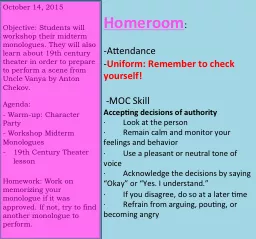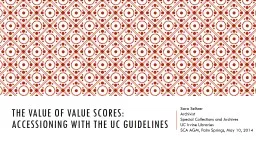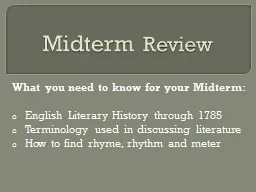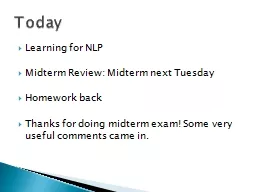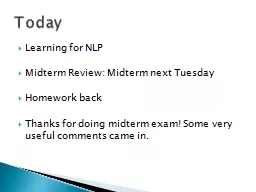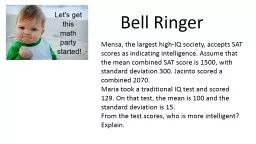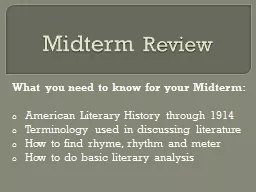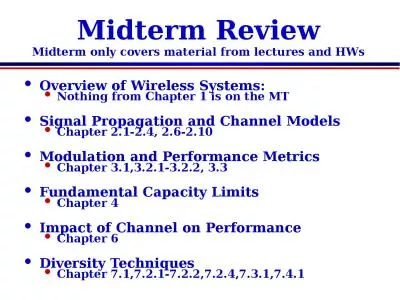PPT-Midterm Scores
Author : giovanna-bartolotta | Published Date : 2016-08-06
181 points total Grade Range Score Number of students in this range A 160181 16 B 120159 16 C 90119 16 D 7089 9 F lt40 4 Median Score 120 Top Score 181 For those
Presentation Embed Code
Download Presentation
Download Presentation The PPT/PDF document "Midterm Scores" is the property of its rightful owner. Permission is granted to download and print the materials on this website for personal, non-commercial use only, and to display it on your personal computer provided you do not modify the materials and that you retain all copyright notices contained in the materials. By downloading content from our website, you accept the terms of this agreement.
Midterm Scores: Transcript
Download Rules Of Document
"Midterm Scores"The content belongs to its owner. You may download and print it for personal use, without modification, and keep all copyright notices. By downloading, you agree to these terms.
Related Documents



